Even some 5-10 years ago, products marked "made in china" were treated, to put it mildly, with distrust. Today, the mere mention of Huawei immediately disposes to at least carefully examine the products. In particular, this applies to gadgets. The Chinese brand successfully competes in sales with such giants as Apple or Samsung. In order for you to better choose from the whole variety of phones, the editorial staff of the site "bestx.htgetrid.com/en/" presents a rating of the TOP-10 best Chinese smartphones for 2020.
Content
- 1 The history of the development of Chinese smartphones
- 2 TOP 10 ranking of the best Chinese smartphones for 2020
- 2.1 10th place - Redmi Note 7 (3/32 GB)
- 2.2 9th place - Meizu 16S
- 2.3 8th place - VIVO V15 PRO
- 2.4 7th place - Xiaomi Mi MIX 3 5G (6/64)
- 2.5 6th place - OnePlus 6 (8/128 GB)
- 2.6 5th place - Honor View 20
- 2.7 4th place - Xiaomi Mi9
- 2.8 3rd place - Huawei Mate 30 Pro
- 2.9 2nd place - Huawei P30 Pro
- 2.10 1st place - OnePlus 7 Pro
The history of the development of Chinese smartphones
But before plunging into a review of the best of the best, it would be nice to read the history of the development of gadgets from China.
The beginning of zero

This period can probably be called the time of experiments. Then the craftsmen from the Celestial Empire tried to copy everything they could only see. Of course, this also applied to mobile devices. This is how the famous phones (with distorted names of famous brands) “Nokla”, “Suny Ericsson”, etc. were born. Of course, the average price of these clones was significantly lower than the originals. In fact, that's why they gained such popularity.
And what is most interesting, these Chinese-made mobile phones were not limited to the domestic market. For example, unnamed "pipes" were imported into the territory of Russia in huge quantities, on which entrepreneurs affixed their names. And after all, there was a demand, and such that even the word "big" here would be a rather modest characteristic.
An important event is the conclusion of a contract with the manufacturer of chips and processors MediaTek. That is, the creators of the devices had everything they needed - all that was left was to come up with a shell.
And here the manufacturers did not skimp on imagination. Among mobile devices one could find not only standard rectangular "bricks", but also the most daring design solutions. For example:
- Telephones with TV antennas for watching TV channels;
- Device in the form of a Marlboro pack;
- Mobile phone in the form of a key fob from a car;
- Apple-shaped;
- A device with a device for detecting counterfeit banknotes.
Of course, all this now looks ridiculous, but at that time what was happening showed that with China it was necessary to reckon that their domestic market for communications is more daring and progressive.
2007-2008 years

It is not for nothing that these years are singled out separately. Immediately two significant events happened at this time: the release of the first iPhone from Apple with their iOS and the introduction to the world of an OS called Android. We are more interested in the second.
Until 2007, Chinese gadgets used Windows Mobile and Symbian as operating systems. But after the appearance of an open, accessible and inexpensive Android system, gradually many began to switch to it. Popular phone models "made in china" turned out to be an excellent platform for the development of operating systems with a green man in this regard.
Officially, the first Chinese Android device was the HTC Dream. It was after him that this very transition to the new OS began.
However, everything turned out to be not as cloudless as desired. Because mobile phones on Android were very hot, charging quickly sat down, the sensor "lagged" - in general, a whole bunch of troubles. There is a problem - low performance of the MediaTek processor.And the solution was the simplest - they changed the chipset supplier - to Qualcomm. Then, of course, MediaTek regained its position by issuing much more powerful component materials. The processors were no longer single-core, but dual-core. For the price, of course, they were lower.
Well, and then the OS itself developed. Therefore, nothing prevented China from actively gaining a place on the pedestal among smartphones around the world, providing high-quality, but at the same time, budget devices. Which, of course, is the main selection criterion for a large number of people.
2009 - our time
The first mobile phone that overcame all difficulties with the new OS was the Huawei U8220. And, as far as this company is concerned, it was with this model that their rapid and successful rise began.
Other well-known best manufacturers from the largest country on our planet also supported their compatriots. Among them were: Lenovo and Meizu. The latter, for some unknown reason, did not immediately join the trend of switching to Android, and created the M8 on the My Mobile OS platform (such experiments, by the way, often won their audience: for example, it was also with Xiaomi Mi 1, which used the MIUI shell). But the upcoming M9 has given more preference to the advantages of the "green robot", updated to version 2.2.
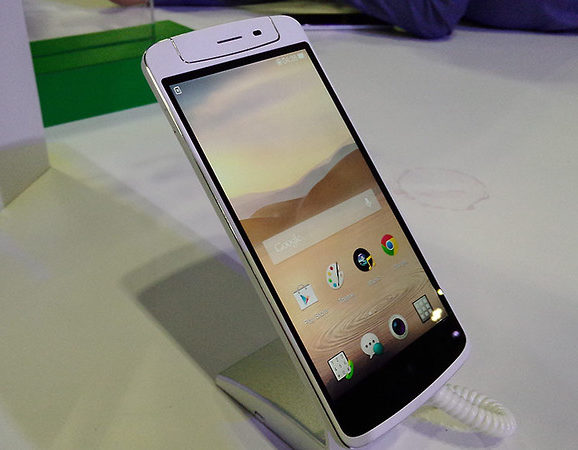
The popularity of Xiaomi and Meizu models pushed Oppo to provide the world with something worthy of attention too. And they did not lose by "blurting out" the world's thinnest phone (at that time - 2014). The functionality, of course, did not lag behind either. Then they started talking about Oppo differently. The manufacturers decided that there was no need to stop there and created a new subsidiary OnePlus with the One us One device (Android, of course, was chosen as the OS).
Today, this series of phones is proudly called the "flagship killer", as the popularity of models both then and now strongly influences the sales of Apple and Samsung. It's all about high quality and inexpensive cost.
Later, the whole world will hear about Honor devices, Vivo, etc. By the way, Vivo, at the beginning of sales in 2018, boasted a handset with a fingerprint scanner built into the display.
At the moment, the flagships from the homeland of paper have all the latest developments: slide cameras, fingerprint recognition, face recognition, 8-core processors and much, much more. And there are many places where you can profitably buy any Chinese phone (on Aliexpress, for example, not to mention the numerous shops selling phones), including ordering online.
Having traveled a rather long, but very unusual and worthy path, today Chinese smartphones are not a strange fake with wheezing speakers, an incredible number of SIM cards (dual sim, etc.), terrible backlash and parameters that do not correspond to reality; on the contrary, gadgets from the Middle Kingdom often outstrip the two giants of the mobile market in some indicators. That is why I really want to take a closer look at the best Chinese smartphones for 2020.
TOP 10 ranking of the best Chinese smartphones for 2020
It's time, finally, to move on to the heroes of the celestial mobile engineering thought. There will be new items, and already proven "guys"; we will not ignore both budget and premium models. There are several positive characteristics that are common to the best-selling gadgets from China:
- Affordable price. Whatever one may say, but this indicator is very important. Needless to say, thanks to him, the global phone market is flooded with Xiaomi, Meizu, OnePlus and the like.
- High capacity RAM (4 GB, 6 GB or more).
- The number of cores on the processor (4 now hardly surprise anyone, so 8 are already in use).
- Spare parts. It is very easy to find them, and they will be able to repair them in almost every cell repair shop.
- A pair of sim cards. Well, Chinese phones have always had a passion for this, so you shouldn't be surprised.
- And some other points.
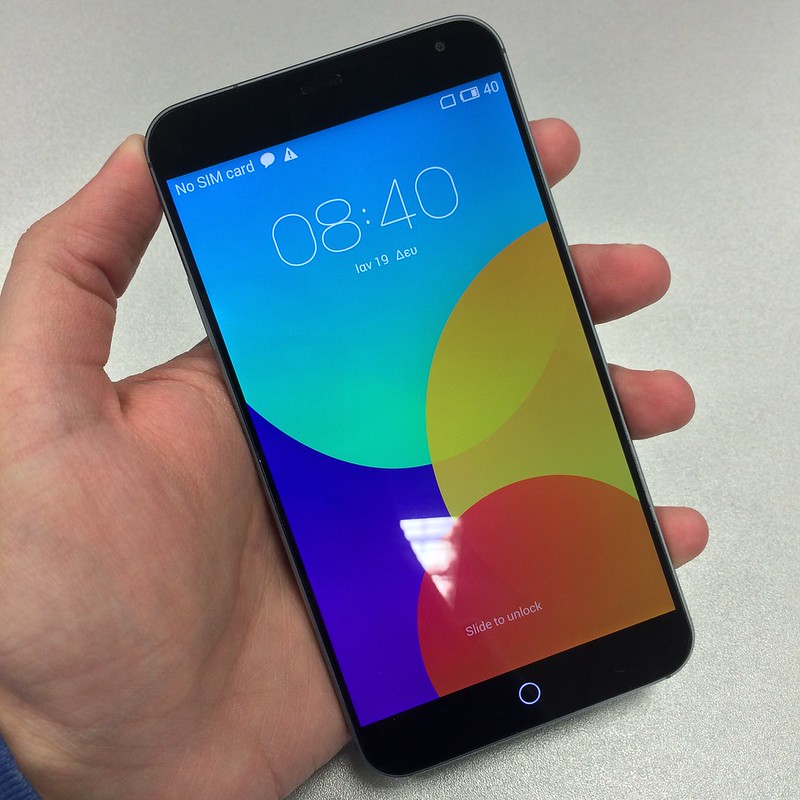
Of course, these devices also have drawbacks, and in sufficient quantities. But more details will be in each individual device.
In general, we will try to help answer questions from the category: "which company is better to take a smartphone" or "which model is better to buy". Go!
10th place - Redmi Note 7 (3/32 GB)

The rating of really high-quality smartphones from China opens with Redmi Note 7. We deliberately took the cheaper version (up to 15,000), because there are 4/64 and 4/128 and put it in 10th place in the rating. She deserves it, although, probably, many will disagree.
Externally, the Note 7 looks cute and stylish. It is comfortable to hold in the hand, even though the gadget is a little slippery. It is better to use it with a case, which, by the way, is included in the package for Redmi Note 7. Among the obviously rushing disadvantages there is a protruding front camera and a glass case. Alas, according to customer reviews, it becomes clear that even a standard silicone case does not save the camera from scratches.
| Year of issue | 2019 |
|---|---|
| Cellular network | 4G (LTE) |
| Number of Cores | 8 |
| Frequency | 2.2 HZ |
| CPU | Qualcomm Snapdragon 660 |
| RAM | 3 GB |
| OS | Android 9.0 |
| Phone memory | 32 GB |
| Rear camera | 48 + 5 megapixels |
| Front-camera | 13 megapixels |
| Memory card slot | there is |
| Number of SIM cards | 2 |
| Battery | 4000 mAh |
| Wifi | Yes |
| Screen | 6,3" |
| PPI | 409 |
Benefits:
- Favorable price: even the model with increased memory costs a little;
- 4K video support;
- Performance is up to par for a smartphone in this price range;
- Supports fast charging;
- Works with Bluetooth 5.0.
Disadvantages:
- No NFC, which manufacturers justify by making the product cheaper;
- The declared transcendental MPs do not give out their entire resource;
- Mono speakers, which quickly begin to wheeze at increased volume;
- Despite its good performance, Note 7 is not suitable for games, except for simple ones;
- Little RAM and phone memory, not even an improved version.
Conclusions:
Despite its strong drawbacks, the Note 7 is one of the best in terms of price / quality ratio. True, due to the lack of some functions that are expected today even in the cheapest gadgets, Redmi cannot rise above the 10th line.
9th place - Meizu 16S
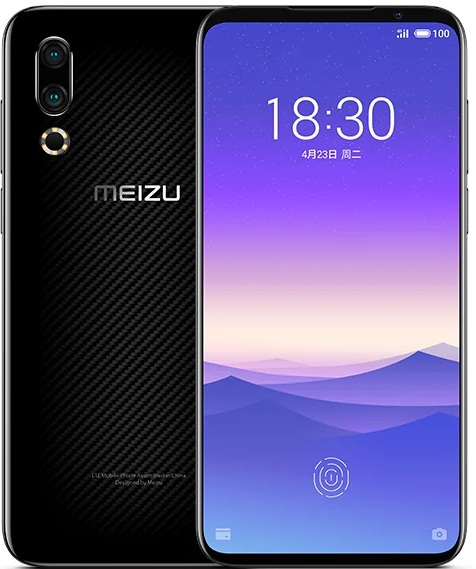
Consumers have a special relationship with Meizu: they tell them about the shortcomings, the company with the next flagship eliminates them. For example, there was no NFC - now with NFC; the screen format has been slightly changed, etc. Outwardly, the 16S looks very attractive - there are no cutouts on the screen - they managed to squeeze the front camera into a part of the upper band of the case. Of course, this influenced the way the photographs turn out. The case itself, by the way, is also far from ideal - it is very easily soiled due to its structure.
Overall, this smartphone doesn't have many drawbacks. And there are certainly more pluses.
| Cellular network | 4G (LTE) |
|---|---|
| Number of Cores | 8 |
| Frequency | 2.8HZ + 1.8HZ |
| CPU | Qualcomm Snapdragon 855 |
| RAM | 6 GB |
| OS | Android 9.0 |
| Phone memory | 128 GB |
| Rear camera | 48 + 20 megapixels |
| Front-camera | 20 megapixels |
| Memory card slot | not |
| Number of SIM cards | 2 |
| Battery (accumulator) | 3600 mAh |
| Wifi | Yes |
| Screen | 6,2" |
| PPI | 400 |
| Overall dimensions | 73.4x151.9x7.6 |
Benefits:
- Suitable for active games: most of them do not slow down;
- The stereo sound is pretty good;
- Photos and videos are decent, including the front-facing;
- NFC;
- Support for wireless charging;
- Powerful processor.
Disadvantages:
- There is no 3.5 mm output;
- Easily soiled;
- Despite the 20 megapixels, the front-facing camera does not provide the proper quality;
- Weak equipment: only charger;
- High price.
Conclusions:
An excellent smartphone from Meizu, which is improved depending on customer demand. Honor and praise to the producers, only they do it very slowly. While Meizu was fixing the shortcomings of 2018, Samsung has already solved the problems of 2020.
8th place - VIVO V15 PRO
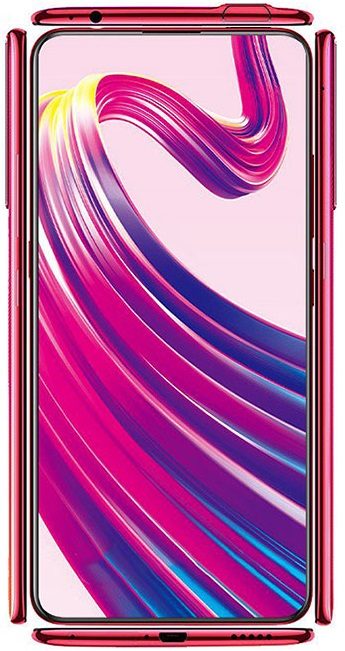
The V15 Pro continues the ranking of the best models from VIVO. The company has always surprised: now with a fingerprint sensor built into the screen, now with a selfie camera that "pops out" from the body. She does it beautifully, effectively and with sound. To "call" it, you must press a special button on the screen, or it comes out automatically when the display is unlocked in the face.
| Cellular network | 4G (LTE) |
|---|---|
| Number of Cores | 8 |
| Frequency | 2.0HZ + 1.7HZ |
| CPU | Qualcomm Snapdragon 675 AIE |
| RAM | 6 GB |
| OS | Android 9.0 |
| Phone memory | 128 GB |
| Rear camera | 12 + 8 + 5 megapixels |
| Front-camera | 32 megapixels |
| Memory card slot | there is |
| Number of SIM cards | 2 |
| Battery | 3700 mAh |
| Wifi | Yes |
| Screen | 6,3" |
| PPI | 403 |
| Headphone jack | 3.5mm |
| GPS | Yes |
Benefits:
- Selfie camera chip;
- There is a button to call the voice assistant;
- Protective glass;
- Works fast, if not the most advanced processor;
- The quality of cameras can be judged by the way they take pictures at night (and they do it very well);
- Supports fast charging.
Disadvantages:
- MicroUSB connector, although everyone switched to TYPE-C long ago;
- Cameras without optical zoom;
- High price for these specifications.
Output:
VIVO takes a higher place in the rating only due to its interesting and unique solutions, such as a "pop-up" front camera. For the rest, it is somewhere inferior to cheaper gadgets.
7th place - Xiaomi Mi MIX 3 5G (6/64)
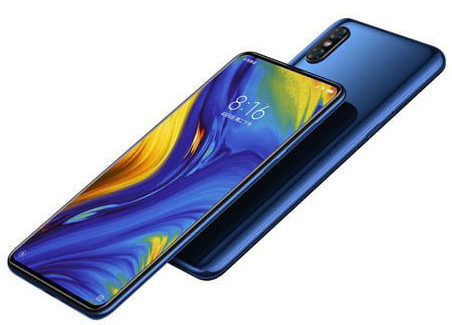
Officially the first representative of Xiaomi, although almost everyone knows that Note is also their project. The Mix 3 is one of the first smartphones to be 5G ready, which is certainly an important characteristic (especially according to experts), but not at the moment.
But even without this, there is a lot of interesting things on the mobile phone. For example, a slider. Although this fact is also not so rosy. After all, if you remember the "clamshells", then the connection loop very quickly failed. With Mix 3, there have been no serious problems with this issue, but wait and see.
| Cellular network | 4G (LTE) / 5G |
|---|---|
| Number of Cores | 8 |
| Frequency | 2.0HZ + 1.7HZ |
| CPU | Qualcomm Snapdragon 855 |
| RAM | 6 GB |
| OS | Android 9.0 |
| Phone memory | 64 GB |
| Rear camera | 12 + 12 megapixels |
| Front-camera | 24 megapixels |
| Memory card slot | not |
| Number of SIM cards | 2 |
| Battery | 3800 mAh |
| Wifi | Yes |
| Screen diagonal | 6,3" |
| PPI | 403 |
| Headphone jack | Yes |
| Autofocus | there is |
Benefits:
- Reliable ceramic body;
- Good memory capacity;
- Slider;
- Wireless charger;
- NFC.
Disadvantages:
- From examples of photos on the web, it becomes clear that the cameras are not as good as expected;
- No 3.5mm headphone jack;
- No microSD.
Conclusions:
Small flaws, of which there are many, of course, are justified by an affordable price. However, this does not allow him to be higher. Besides, it is not clear how the slider will behave.
6th place - OnePlus 6 (8/128 GB)
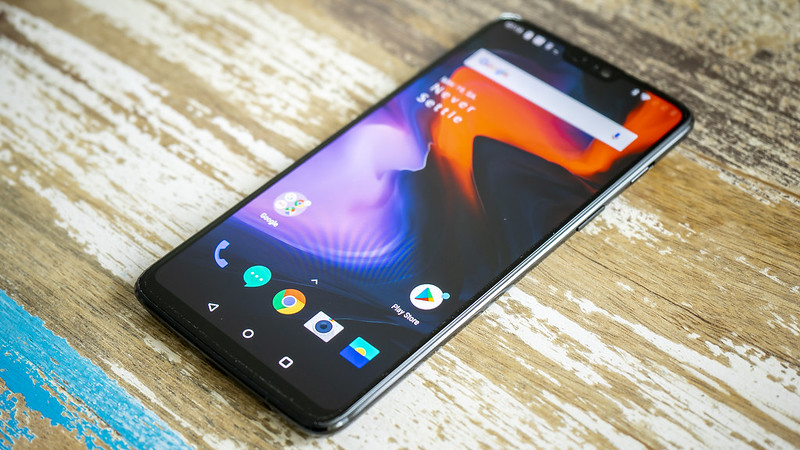
So a brand new company appeared on the list - OnePlus. The smartphone is quite smart, you can play games on it, and watch movies in high definition. And, unlike their "fellow tribesmen". When shooting 4K and playing games, the gadget does not heat up. Well, if it suddenly starts (possibly with "heavy" toys), then not so much.
Shooting in the dark is not of high quality (although it should be on cameras and other indicators), but, so to speak, it shoots perfectly in the sun, comparable to the Apple Xs.
| Cellular network | 4G (LTE) |
|---|---|
| Number of Cores | 8 |
| Frequency | 2.8 HZ |
| CPU | Qualcomm Snapdragon 845 |
| RAM | 8 GB |
| OS | Android 8.1 (at the start of sales) |
| Phone memory | 128 GB |
| Rear camera | 16 + 20 megapixels |
| Front-camera | 16 megapixels |
| Number of SIM cards | 2 |
| Battery | 3300 mAh |
| Wifi | Yes |
| Screen diagonal | 6,28" |
| PPI | 402 |
Benefits:
- 3.5mm headphone jack;
- Does not heat up;
- High performance, albeit not with the most advanced processor;
- Face recognition;
- NFC;
- You can listen to the radio (although this is unlikely to surprise anyone);
- Fast charging;
- Good equipment.
Disadvantages:
- "Monobrow" cuts off part of the screen (well, now it is almost a relic of the past, and the 6th series is still an outdated model);
- Weak night photography;
- The autonomy of work is not long;
- Dim lantern;
- The body is made of glass, so the phone is quite fragile;
- Despite its excellent work, it is outdated and out of production.
Output:
This flagship did not start very well, but nevertheless then straightened out, which speaks of the quality of the device. Technical characteristics are still at the proper level.
5th place - Honor View 20

And here Honor has joined the race. And immediately to the 5th place. And deservedly so.
The first thing that catches your eye is the absence of a special field for the front camera on the case. No, this does not mean at all that she is not. It's just hidden under the glass. This has both pros and cons. Of course, hiding the front camera allowed us to enlarge the screen and do it across the entire plane. The only thing is that the screen breaks off in place of the front camera.Yes, the dimensions are small and, most likely, it is unlikely that it will greatly interfere with watching a movie and playing. Those less me, the Internet has already divided into 2 camps.
Otherwise, the smartphone is stuffed with excellent hardware, embellished with cool v-shaped lines that shimmer in color (by the way, they are not always visible), equipped with excellent cameras, supplemented with a wireless charger (the length of the cord is no longer important), etc.
| Cellular network | 4G (LTE) |
|---|---|
| Number of Cores | 8 |
| CPU | HiSilicon Kirin 980 |
| RAM | 8 GB |
| OS | Android 9.0 |
| Phone memory | 256 GB |
| Rear camera | 48 megapixels |
| Front-camera | 25 megapixels |
| Number of SIM cards | 2 |
| Battery | 4000 mAh |
| Wifi | Yes |
| Screen diagonal | 6,4" |
| PPI | 398 |
| Headphone jack | 3.5mm |
Benefits:
- The presence of a 3.5 mm jack;
- High performance due to the presence of a powerful processor, large capacity of RAM, etc.
- Excellent cameras (both front and rear);
- Not bad battery life with 4000 mAh battery;
- NFC;
- 4K video shooting.
Disadvantages:
- To watch movies, it's better to immediately try if the front camera will interfere;
- Insufficient contrast of the screen (OLED would look more preferable here);
- The whole insides are really powerful, just not advanced.
Output:
In fact, starting from the fifth place, almost any smartphone deserves to take the top spot. Therefore, some differences and taste preferences will play a role in the distribution of the position on the podium.
4th place - Xiaomi Mi9
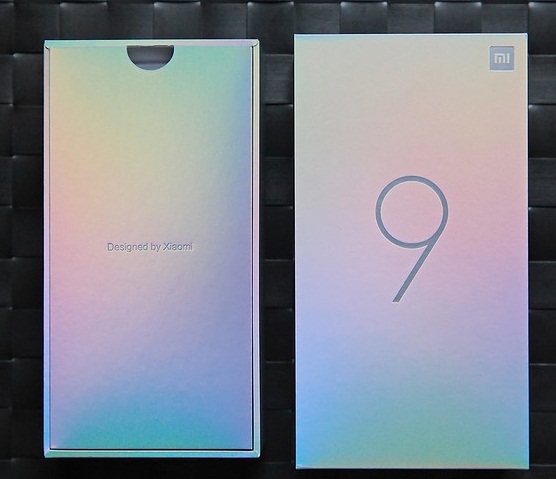
By the way, these two gadgets are often compared with each other. Indeed, they are very similar, but not externally, but with filling, technical characteristics and prices. Those who are more versed in the hardware of phones do not think how to choose between the two, they choose Xiaomi.
Mi9, unlike Honor, is equipped with the best processors, video platform, etc. and, perhaps, the only thing that Xiaomi is inferior to is in design. It is more strict and simpler, we do not stand out in any way in terms of new ideas, so some sophisticated users will prefer Honor.
| Cellular network | 4G (LTE) |
|---|---|
| Number of Cores | 8 |
| CPU | Qualcomm Snapdragon 885 |
| RAM | 6 GB |
| OS | Android 9.0 |
| Phone memory | 128 GB |
| Rear camera | 48 + 16 + 12 megapixels |
| Front-camera | 20 megapixels |
| Number of SIM cards | 2 |
| Battery | 3300 mAh |
| Wifi | Yes |
| Screen diagonal | 6,39" |
| PPI | 403 |
Benefits:
- Advanced hardware;
- Thanks to the best components, the whole interface is very smooth and fast;
- Wide access to camera capabilities;
- NFC;
- Fast charging very fast J;
- Affordable price.
Disadvantages:
- Lack of imagination among the designers of the case (no matter what they say, but nowadays this is a serious drawback);
- Low battery capacity (even if it's not very different even in comparison with Honor's 4000);
- Noises during night shooting.
Output:
An excellent smartphone with powerful components, a good camera and an affordable price. It seems that there is nothing more to say. In general, a solid fourth place.
3rd place - Huawei Mate 30 Pro
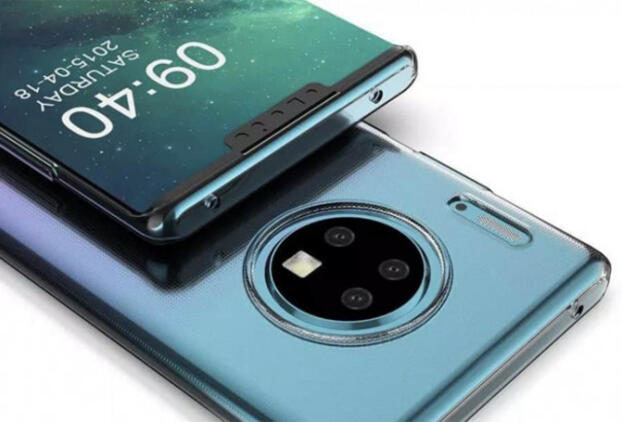
A real flagship with a very serious claim to win. His cameras see in a dark room what the human eye cannot see. Well, slow motion can, as they say, catch the flapping of the wings of a hummingbird. In general, a separate camera is allocated for video, which, in its free time from direct purpose, serves as a wide-angle camera.
Apparently, taking into account the harshness of the statements of dissatisfied users, the manufacturers decided to respond with all these innovations with video.
| Cellular network | 4G (LTE) |
|---|---|
| Number of Cores | 8 |
| CPU | HiSilicon Kirin 980 |
| RAM | 8 GB |
| OS | Android 9.0 |
| Phone memory | 256 GB |
| Rear camera | 48 + 20 + 8 MP |
| Front-camera | 24 megapixels |
| Number of SIM cards | 2 |
| Battery | 4200 mAh |
| Wifi | Yes |
| Screen diagonal | 6,39" |
| PPI | 538 |
| Memory card slot | there is |
Benefits:
- Just the TOP of all TOPs regarding the camera;
- Powerful enough processor and all the stuffing;
- Night shooting as night vision;
- NFC;
- An interesting solution with the abandonment of buttons.
Disadvantages:
- Image clarity is worse than on the previous model;
- In order to use some functions, you need to knock on the screen;
- Doubtful convenience of adding / subtracting sound (it is sensory);
- Poor sound quality both in headphones and speakers;
- Slippery screen;
- The waterfall display is stretched and quickly scratched and damaged by any slight fall;
- The camera gets dirty quickly;
- No YouTube, Google services.
Output:
In fact, honor and praise Huawei for such a model, especially for the cameras. It is not for nothing that DxOMark recognized the camera as the best. However, the limited applications, the abandonment of buttons and some other controversial innovations strongly prevent the Mate 30 Pro from climbing above the third place.
2nd place - Huawei P30 Pro
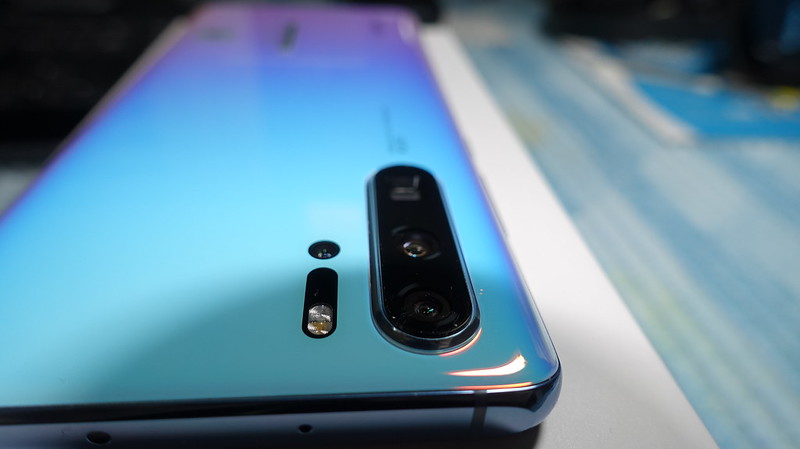
Another representative of Huawei, which took the second place in our rating. What you should know about this smartphone This is the latest, most recent model with the Huawei logo. Accordingly, she tried to absorb all the best from the previous version and take a few steps or jumps forward.
For example, the earpiece speaker has been replaced with a piezo element. Quite an unusual solution, but so far there have been no complaints about it.
| Cellular network | 4G (LTE) |
|---|---|
| Number of Cores | 8 |
| CPU | HiSilicon Kirin 980 |
| RAM | 8 GB |
| OS | Android 9.0 |
| Phone memory | 256 GB |
| Rear camera | 40 + 20 + 8 Mp |
| Front-camera | 32 megapixels |
| Number of SIM cards | 2 |
| Battery | 4200 mAh |
| Wifi | Yes |
| Screen diagonal | 6,47" |
| PPI | 398 |
Benefits:
- In terms of technical configuration, it is practically not inferior to the most powerful devices at the moment;
- The fingerprint scanner is "sewn" under the glass on the front side;
- Long battery life;
- 5x optical zoom;
- NFC;
- Wide range of image customization options.
Disadvantages:
- The problem of sliding the phone in your hands, like all glass mobile phones;
- Very fragile;
- There is no separate slot for memory cards, only instead of a SIM card (one of the SIM cards);
- No 3.5mm headphone jack;
- There is no fast charging system;
- Medium quality sound.
Output:
Users note some inconveniences in the way the smartphone sits in the hand. Therefore, it is better not to order it in the online store, but to try it out in the salon. Because it costs as much as both Apple and Samsung.
In general, we must pay tribute to Huawei for the fact that they took into account and corrected many points. Now, probably, it's the sound. Until then - the second place in our rating.
1st place - OnePlus 7 Pro
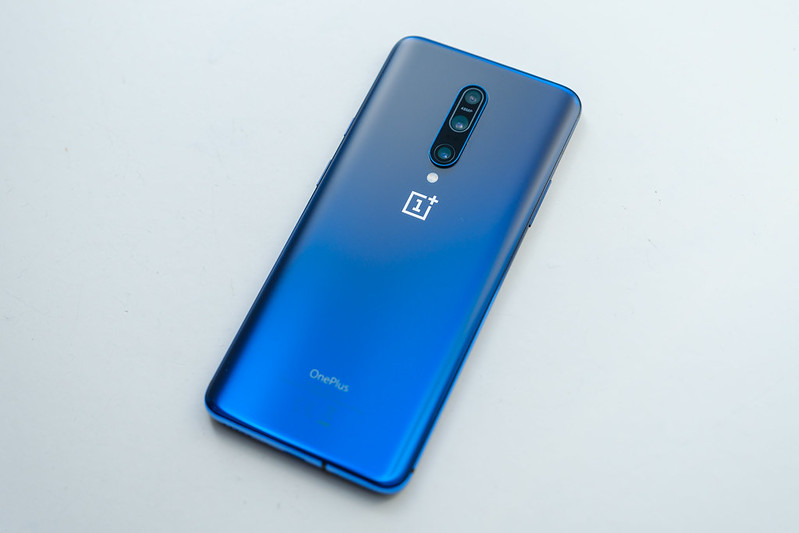
The winner of the title of the best Chinese smartphone for 2020 is OnePlus 7 Pro. Of course, this decision was not easy, because a real giant is on the second line. However, there are some details that fully explain the OnePlus' positioning in the first position.
At first glance, the flagship looks nice, but simple enough. I would like to immediately dwell on the fact that the front camera is not visible. This should not be alarming, because she is "popping out" here. Yes, just like Vivo. It is especially interesting and noteworthy that the front camera is well protected. For example, when the phone realizes that it is falling, the camera will quickly retract back. The same thing happens when you press on it or hit it. In the event that she has to get out, but bumps into an obstacle, the camera makes several attempts and then leaves a notification about the impossibility of executing the command.
| Cellular network | 4G (LTE) |
|---|---|
| Number of Cores | 8 |
| CPU | Qualcomm Snapdragon 885 |
| RAM | 8 GB |
| OS | Android 9.0 |
| Phone memory | 256 GB |
| Rear camera | 48 + 8 + 16 Mp |
| Front-camera | 16 megapixels |
| Number of SIM cards | 2 |
| Battery | 4000 mAh |
| Wifi | Yes |
| Screen diagonal | 6,67" |
| PPI | 515 |
Benefits:
- Perfectly protected and well-made sliding front camera;
- One of the best displays in terms of image;
- Photo quality is not lost when zooming in;
- Perfectly shoots during the day, but very little noise during night shooting;
- NFC;
- Fast charging;
- Advanced hardware (all applications and games just "fly")
Disadvantages:
- No 3.5mm headphone jack;
- The back wall without a cover is quickly scratched;
- A bit heavy device;
- No official certified moisture protection;
- Actual optical zoom is only 2.2x;
- Despite the large capacity of the battery, it does not last much;
- No wireless charging.
Output:
The filling of the smartphone, its screen, is simply gorgeous. The rest, perhaps, will endure. Well, further words are superfluous. First place!
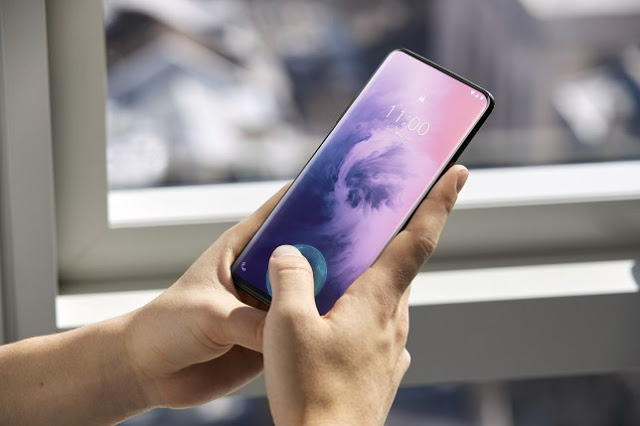
Well, it’s expensive to watch the development of the Chinese smartphone market.They not only make a high-quality and affordable product themselves, but also “make” competitors move. Do you think OnePlus deservedly took first place? Write your rating in the comments, we will discuss.












